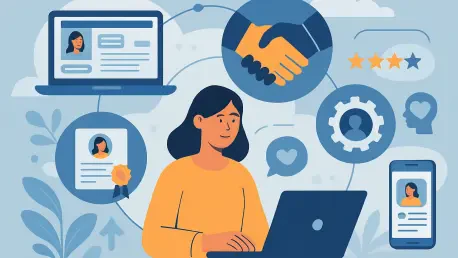As we dive into the evolving landscape of employee experience, I’m thrilled to sit down with Sofia Khaira, a renowned specialist in diversity, equity, and inclusion, who has dedicated her career to transforming talent management and fostering equitable workplaces. With her deep expertise in HR, Sofia offers unique insights into how organizations can break down barriers and create seamless support systems for their employees. In this conversation, we explore the challenges of internal silos, the integration of IT service management principles into HR practices, and the future of employee support through simplification and technology.
Can you share your perspective on what employee experience means and why it’s become such a critical focus for HR leaders in recent years?
Employee experience, or EX, is really about the entire journey an employee goes through with an organization—from the moment they’re recruited to the day they leave. It encompasses how they feel about their work environment, the support they receive, and whether they can thrive in their role. It’s become a top priority because today’s workforce expects more than just a paycheck; they want a workplace that feels intuitive and supportive, much like the consumer experiences they’re used to outside of work. With competition for talent so fierce, HR leaders know that a poor EX can lead to disengagement and turnover, while a great one drives productivity and loyalty.
What challenges have you encountered in providing seamless support across different functions like HR, IT, and finance within an organization?
One of the biggest challenges is the disconnect between departments. Each function often operates with its own systems, priorities, and timelines, which creates a fragmented experience for employees. For instance, I’ve seen cases where a new hire needs to coordinate with HR for payroll, IT for equipment, and facilities for access cards, and they’re bouncing between different points of contact with no clear path. This lack of alignment not only slows things down but also frustrates employees who just want quick, cohesive support. Communication gaps and mismatched processes are often at the root of these issues.
How do internal silos specifically affect key employee moments like onboarding, and can you recall a time when this caused frustration?
Silos can turn onboarding into a maze. When departments don’t collaborate, new hires are left chasing approvals or waiting for responses across multiple teams. I remember a situation where a new employee couldn’t access their laptop for over a week because IT hadn’t synced with HR on the setup timeline. Meanwhile, HR assumed everything was handled. The employee felt unsupported and started their role on a sour note, which could have been avoided with better cross-departmental coordination. These delays signal to employees that the organization isn’t prepared for them, undermining trust right from the start.
In your experience, which specific areas like payroll or benefits tend to be most disrupted by these silos?
Payroll and benefits are often hit hardest because they involve sensitive, time-critical information that spans multiple teams. For example, if HR updates an employee’s status but finance isn’t looped in, there can be delays in salary adjustments or errors in deductions. Benefits enrollment is another pain point—employees might submit forms to HR, but if the insurance provider or payroll team isn’t aligned, activation gets delayed. These issues aren’t just logistical; they impact an employee’s financial security and peace of mind, making the stakes even higher.
How do you see IT service management principles helping HR improve employee support, and what’s your understanding of their role?
IT service management, or ITSM, is about using structured processes, automation, and tools to deliver efficient, user-focused services—something IT has done for years. For HR, adopting ITSM means applying those same ideas to streamline how we handle employee requests. It’s about creating clear workflows, so a benefits inquiry doesn’t get lost in someone’s inbox, or using automation to track and resolve tickets faster. I see it as a way to make HR more responsive and proactive, ensuring employees aren’t waiting days for answers. It shifts the focus from manual firefighting to scalable, reliable support.
Have you ever implemented structured workflows or automation inspired by IT practices, and if so, what was the impact?
Yes, in a previous role, we introduced a ticketing system for HR queries, much like IT uses for tech support. Employees could log requests—say, for a contract update or leave approval—and track the status in real time. We also automated reminders for pending tasks. The result was a noticeable drop in resolution times, from several days to often under 24 hours for routine issues. Employees appreciated the transparency, and our team could focus on more complex, strategic work instead of chasing follow-ups. It wasn’t perfect at first, but it laid a strong foundation for better service.
What’s your take on self-service tools, and how do you think they could reshape the way employees interact with HR?
Self-service tools are a game-changer. Employees today want instant answers, and tools like knowledge bases or FAQs let them resolve common questions—like checking leave balances or downloading forms—without waiting for HR to respond. In my view, this empowers employees to take control of their needs while freeing up HR for deeper, more personalized support. It also builds a culture of independence and efficiency. I think it reshapes interactions by making HR more of a strategic partner than a constant go-between, though it’s crucial to ensure these tools are user-friendly and accessible to everyone.
Do you agree that silos are the primary barrier to effective service delivery, as many organizations report, and why or why not?
I absolutely agree. Silos create unnecessary friction by isolating data, processes, and communication. When departments don’t share a unified system or vision, employees end up stuck in the middle, navigating a patchwork of disconnected services. I’ve seen how this leads to duplicated efforts and delays, which directly hurt satisfaction and productivity. While other factors like outdated tech or understaffing play a role, silos are often the root cause because they prevent the kind of collaboration needed to deliver a cohesive experience.
How have you approached mapping out the employee journey to identify bottlenecks, and what’s your process for simplifying workflows?
Mapping the employee journey starts with walking through every touchpoint—from recruitment to exit—and seeing it from the employee’s perspective. I usually gather input from staff at all levels to pinpoint where they feel stuck, whether it’s waiting for approvals or unclear policies. Then, I work with cross-functional teams to chart these processes visually, highlighting redundancies or delays. Simplifying often means cutting unnecessary steps—like reducing multiple sign-offs for routine requests—and standardizing how information flows. It’s about making the path as direct as possible before layering on any tech solutions.
Looking ahead, what’s your forecast for the future of employee experience and the role of HR in driving it forward?
I believe the future of employee experience will be defined by integration and personalization. HR will play a central role in uniting functions like IT and finance under a single, seamless service model, likely through enterprise-wide platforms that break down silos for good. At the same time, with advancements in AI and data analytics, HR can tailor support to individual needs—think customized onboarding plans or predictive tools that flag burnout risks. My forecast is that HR will evolve from a support function to a strategic driver of engagement, leveraging technology to create workplaces where employees feel truly valued and empowered.









